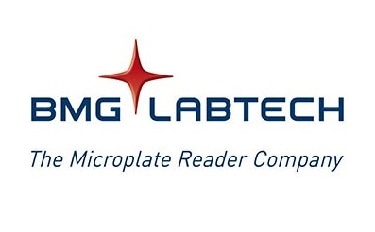The distilled beverage industry, while rapidly creating new products, is also constantly under threat from counterfeit and adulterated or diluted products. It was recently discovered that UV-Visible spectroscopy can be a useful tool for determining the quality of distilled beverages and detecting adulteration.1–5
Distilled spirits can be categorized as white and aged. When spirits age in wood, they absorb sugars, tannins, color, and other complex compounds and undergo several chemical reactions. These changes are complex and are still unresolved, and can be detected by UV-visible scanning of the samples. Additionally, some colors, sugars, citric acid, and botanicals may also be present.
The SPECTROstar Nano microplate reader can accurately measure the spectra of several samples simultaneously and over time using the integrated spectrometer. The MARS data evaluation software can display all the plots immediately, allowing almost real-time assessment of the quality of the distilled spirits.
Assay Principle
Distilled spirits should be investigated in the non-diluted form, and very small volumes are used to decrease the path length. This is important when measuring darker or complex spirits and liqueurs.
For authentication, a library of specific styles and “fingerprints” of brands are stored in the MARS software. Then, the tested sample can be compared for authenticity to the pure sample data from the library, making it simple to decide whether a product should be recalled.
Generally, spectra for spirits are acquired between 250 and 400 nm, as they have a broad band centered at about 280 nm, whose maximum changes with the type of spirit and brand. Unique characteristics of each spirit arise from within the style and differences in brands based upon the process, blending, additives, and aging. Over time, a large database can be generated that helps maintain product quality.
Materials and Methods
- UV transparent 96-well plates (Costar)
- SPECTROstar Nano (BMG LABTECH)
The chosen spirit samples of volume 100 µL (Fig. 2–4) were pipetted onto the microplates, with replicates, ensuring the samples are free of bubbles and were read on a SPECTROstar Nano.
Instrument settings:
| . |
. |
| Measurement mode: |
Endpoint |
| Wavelength Settings: |
Spectra |
| Wavelength Range: |
220–1000 nm |
| Scan Resolution: |
2 nm |
| Path Length Correction: |
Off |
Results and Discussion
The spectral profiles of several spirits ranging from white colored tequila and aged tequila to darker spirits such as Canadian whisky, Scotch whisky, and three brands of Bourbon whisky in Fig. 2 show that there is a wide variety of spirits with unique differences between the same type of spirit.
.jpg)
Figure 2. UV-Visible fingerprint profiles of white and colored classes of distilled spirits.
Another use of spectral analysis is to follow the desirable changes in a spirit with maturation in wood by choosing the times of obtaining the spectra. A white whisky and unaged cachaca have a low absorbance (Fig. 3). An aged cachaca, produced by the same distillery shows increased absorbance because of wood aging and is unique for the brand. This signature remains similar across batches, indicating UV-vis spectral analysis is valid for authenticating brands.
.jpg)
Figure 3. UV-Visible fingerprint profiles of a white whiskey and un-aged and an aged Cachaça (cane sugar spirit).
Spirit-grade caramel can be added in some spirits, and the quality of this caramel can be investigated by spectroscopy (Fig. 4). This is useful to ensure quality when the addition is allowed and to detect adulteration. Similarly, this method can also be used for other additives.
.jpg)
Figure 4. UV-Visible fingerprint profiles of a white spirit “as is” and after the addition of a spirit grade caramel.
Conclusion
UV-visible spectroscopy using the SPECTROstar Nano is a powerful tool for quality control of distilled beverages including brand authentication and detection of adulteration. An advantage of the SPECTROstar Nano over other comparable instruments is its ability to measure multiple samples simultaneously, which can provide multiple sample data in the same time as that taken by other instruments for one sample. It is also fast, efficient, and precise as no blanks are required and there is no need to switch the path length devices. Small sample sizes, as low as 100 µL, and replicates are easy to test in the multi-well microplate format.
References
- Barbosa-García, O., et al.(2007) Spectrochimica Acta Part A. 66:129-134.
- Contreras, U., et al. (2010) Food Research International. 43: 2356-2362.
- Ferguson, J., et al. (2007) In: Proceedings of the 3rd International Workshop on Alcoholic Beverages Authentication. C. Guillou and J. Ryder (Eds). European Commission, Joint Research Center. 149-156.
- Munoz-Munoz, A. C., et al. (2007) In: Proceedings of the 3rd International Workshop on Alcoholic Beverages Authentication. C. Guillou and J. Ryder (Eds). European Commission, Joint Research Center. 71-79.
- Nascimento, E. C. L., et al. (2011) J. Braz. Chem. Soc. 22: 1061-1067.

This information has been sourced, reviewed and adapted from materials provided by BMG LABTECH Ltd.
For more information on this source, please visit BMG LABTECH Ltd.